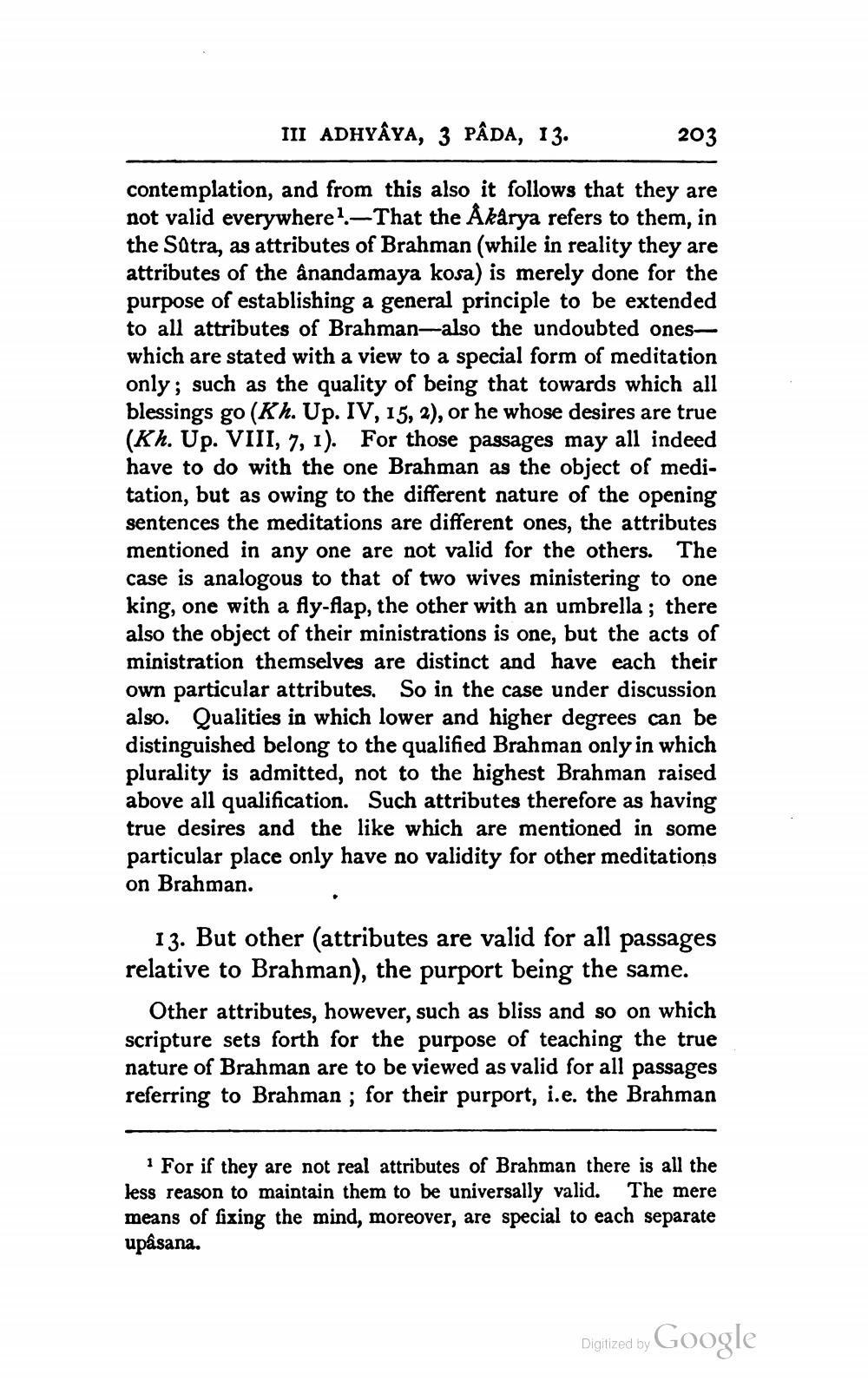________________
III ADHYÂYA, 3 PÂDA, 13.
203
contemplation, and from this also it follows that they are not valid everywhere!.-That the Akarya refers to them, in the Satra, as attributes of Brahman (while in reality they are attributes of the anandamaya kosa) is merely done for the purpose of establishing a general principle to be extended to all attributes of Brahman-also the undoubted oneswhich are stated with a view to a special form of meditation only; such as the quality of being that towards which all blessings go (Kh. Up. IV, 15, 2), or he whose desires are true (Kh. Up. VIII, 7, 1). For those passages may all indeed have to do with the one Brahman as the object of meditation, but as owing to the different nature of the opening sentences the meditations are different ones, the attributes mentioned in any one are not valid for the others. The case is analogous to that of two wives ministering to one king, one with a fly-flap, the other with an umbrella; there also the object of their ministrations is one, but the acts of ministration themselves are distinct and have each their own particular attributes. So in the case under discussion also. Qualities in which lower and higher degrees can be distinguished belong to the qualified Brahman only in which plurality is admitted, not to the highest Brahman raised above all qualification. Such attributes therefore as having true desires and the like which are mentioned in some particular place only have no validity for other meditations on Brahman.
13. But other (attributes are valid for all passages relative to Brahman), the purport being the same.
Other attributes, however, such as bliss and so on which scripture sets forth for the purpose of teaching the true nature of Brahman are to be viewed as valid for all passages referring to Brahman ; for their purport, i.e. the Brahman
1 For if they are not real attributes of Brahman there is all the less reason to maintain them to be universally valid. The mere means of fixing the mind, moreover, are special to each separate upâsana.
Digitized by Google




